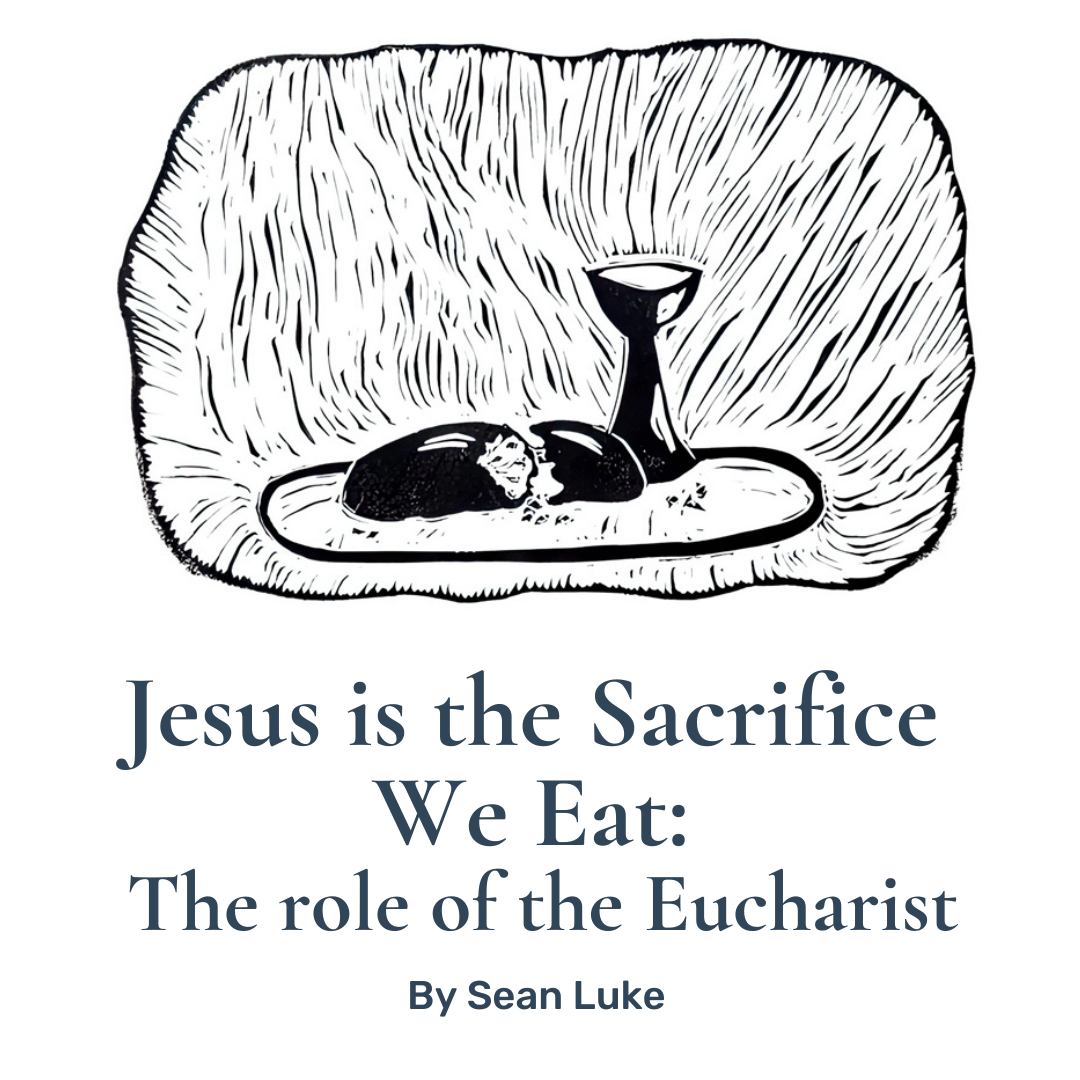I grew up attending church at the behest of my Mom. But as a secretly agnostic child, I always thought Communion was a chance to receive a little snack of grape juice and a cracker. What was Communion for if not for drinking sugar?
Upon coming to Christ, I realized that eating Jesus doesn’t mean that Jesus is some yummy snack given in service. After all, Roman Catholics and Protestants condemned “Capernaite” beliefs that we eat Jesus like one would eat a piece of meat at the meat market. So, then what does it mean to eat Jesus?
Spiritual Eating: More Real, not Less Real
Anglicans affirm that we spiritually eat the body and blood of Christ in the Eucharist. “Spiritual” eating, however, is often confused with “immaterial” eating or “metaphorical” eating. In truth, we think spiritual realities are a deepening of physical reality. St. Paul teaches that we will be raised in spiritual bodies (1 Cor. 15) . He also calls Spirit-filled Christians spiritual people—people indwelled by the Spirit (1 Cor. 2). So, to eat the body and blood spiritually is to receive the body and blood by the powerful work of the Spirit. Bishop John Jewel, one of our Anglican formularies who defended the English church as a Reformed Catholic church[1], explained:
“Herein we teach the people not that a naked sign or token, but that Christ’s body and blood indeed and verily be given unto us; that…spiritually, and with the mouth of our faith, we eat the body of Christ and drink his blood, even as verily as his body was verily broken and his blood shed upon the cross.”
To spiritually eat the body and blood is to eat the body with a mouth informed by the Spirit-given virtue of faith. Virtue is an organizing power of action. Our Lord’s pattern of action in washing the feet of the disciples is informed by the virtue of humility. In the same way, spiritual eating is physical eating informed by the virtue of faith.
But why do we need to spiritually eat Jesus? John Calvin wrote:
“As water…is taken from its source, which, with perennial flow, ever sends forth a new and sufficient supply, so the flesh of Christ is like a rich and inexhaustible fountain, which transfuses into us the life flowing forth from the Godhead into itself.”
To eat the body and blood, then, means receiving Christ’s humanity for the sake of union with Christ. Like a phone receiving electricity from a charger, the Spirit, through faith-filled reception of the Eucharist, links us to the real humanity of Christ to mediate his life, preparing our human bodies for their final resurrection through Christ’s risen flesh. Christ builds us up and draws us into God through the body and blood given by bread and wine. With St. Irenaeus of Lyons, a second century church father, we believe that the Eucharist is a picture of our lives in God. Just as the bread and wine remain and yet are elevated to convey to us the body and blood, so our humanity is more truly human, not less, when it receives Christ. At the altar, we receive divine life from that inexhaustible fountain of life present in his own body. We find our baptismal forgiveness renewed and our lives ever increasingly colored by the hues of the love, life, and beauty of our triune God.
[1] John Jewel, An Apology of the Church of England, ed. Robin Harris and André A. Gazal (Leesburg, VA: Davenant Institute, 2020).
 Sean Luke has been a parishioner of Resurrection together with his wife Sophia Luke since 2017. He is a Graduate Enrollment Counselor at Trinity Evangelical Divinity School, where he obtained his Master of Divinity and Masters of Systematic Theology. He hopes to keep growing in seeing and savoring the beauty of the Gospel in all of life!
Sean Luke has been a parishioner of Resurrection together with his wife Sophia Luke since 2017. He is a Graduate Enrollment Counselor at Trinity Evangelical Divinity School, where he obtained his Master of Divinity and Masters of Systematic Theology. He hopes to keep growing in seeing and savoring the beauty of the Gospel in all of life!
Art print by Cara Hochhalter, Communion/Eucharist, from Art in the Christian Tradition, a project of the Vanderbilt Divinity Library, Nashville, TN

